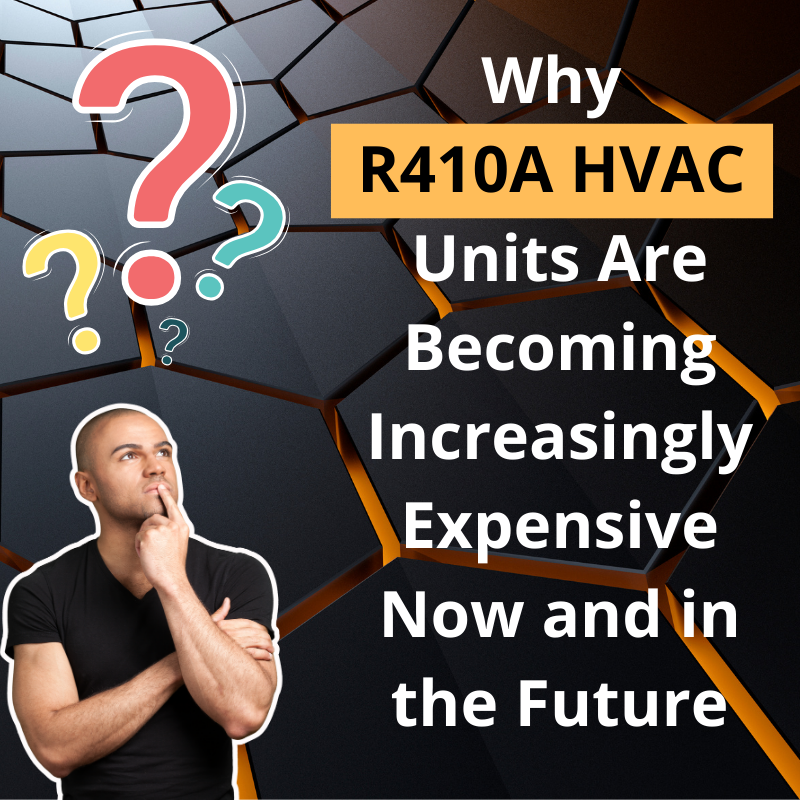As the HVAC industry evolves, so too do the costs associated with maintaining and upgrading heating and cooling systems. One significant trend is the rising expense of R410A HVAC units, both now and in the future. This blog explores the key factors driving these cost increases, including regulatory changes, declining availability, and the growing efficiency gap compared to newer refrigerants like R32.
Regulatory Pressures and Environmental Impact
Stricter Regulations:
R410A is a hydrofluorocarbon (HFC) refrigerant with a high global warming potential (GWP). Due to its significant environmental impact, governments and regulatory bodies around the world are imposing stricter regulations on its use. In the United States, the Environmental Protection Agency (EPA) has introduced phasedown schedules that limit the production and import of high-GWP refrigerants like R410A, leading to reduced availability and higher costs.
Montreal Protocol Compliance:
International agreements such as the Montreal Protocol have accelerated the phase-out of ozone-depleting substances and high-GWP refrigerants. As compliance with these protocols becomes mandatory, the demand for alternative refrigerants like R32, which has a much lower GWP, is increasing. This shift further contributes to the rising cost of R410A units, as manufacturers transition away from this refrigerant.

Discover Top-Grade Air Conditioners: View Our Products Today
Supply Chain Challenges:
As regulations tighten, the production and supply of R410A are being restricted. This reduced availability is driving up the price of existing R410A supplies, making it more expensive to service and maintain older HVAC systems that rely on this refrigerant. Additionally, as more manufacturers and contractors switch to low-GWP refrigerants, the demand for R410A-compatible equipment is declining, leading to higher prices for the remaining units.
Industry Transition to R32:
The HVAC industry is rapidly transitioning to more sustainable refrigerants like R32, which offers superior energy efficiency and a lower environmental impact. As a result, the market for R410A units is shrinking, causing prices to rise as the industry phases out this older technology. Consumers who choose to stick with R410A units may find themselves paying a premium for a technology that is becoming increasingly obsolete.
Increased Maintenance and Service Costs
Limited Technician Availability:
As the industry shifts away from R410A, fewer technicians are being trained to service systems that use this refrigerant. This reduction in skilled labor leads to higher service costs, as technicians with the necessary expertise become more scarce. Additionally, as parts and components for R410A systems become harder to find, repair and maintenance costs will continue to rise.
Energy Inefficiency:
R410A systems are less energy-efficient compared to newer systems using R32. This inefficiency not only leads to higher operational costs but also means that R410A units need to work harder, particularly during extreme temperatures. The added strain on the system can lead to more frequent breakdowns and increased maintenance expenses, further driving up the overall cost of ownership.
Future Outlook and Long-Term Costs
Long-Term Financial Impact:
As R410A becomes more expensive and less available, the long-term financial impact on consumers will be significant. The rising costs of purchasing, maintaining, and operating R410A units make them a less attractive option compared to modern alternatives. Consumers who invest in R410A systems now may find themselves facing even higher costs in the future as the refrigerant continues to be phased out.
Investment in Sustainable Alternatives:
Investing in HVAC systems that use low-GWP refrigerants like R32 is not only a more environmentally responsible choice but also a more financially sound decision. These systems offer better energy efficiency, lower maintenance costs, and are more aligned with future regulatory requirements, providing significant savings over the lifespan of the unit.
The rising costs associated with R410A HVAC units are driven by a combination of regulatory pressures, decreasing availability, and the growing inefficiency of this refrigerant compared to newer options like R32. As the industry continues to move toward more sustainable and efficient technologies, R410A units will become increasingly expensive to purchase, maintain, and operate. For consumers and businesses looking to invest in HVAC systems, choosing a modern alternative like R32 will not only provide immediate savings but also protect against future cost increases. If you’re looking for an R32 product coming soon we suggest the Goodman 3 Ton 16.4 SEER2 R32 Air Conditioner Condenser.







